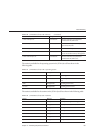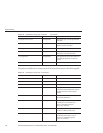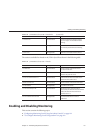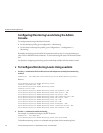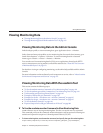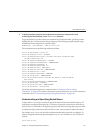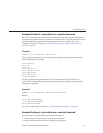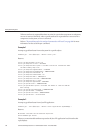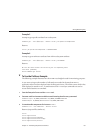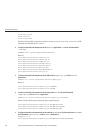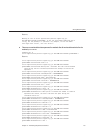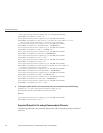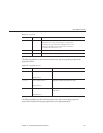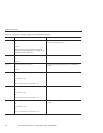
Examples for the list --user admin-user --monitor Command
The list command provides information about the application components and subsystems
currently being monitored for the specied server instance name. Using this command, you can
see the monitorable components and subcomponents for a server instance. For a more
complete listing of list examples, see
“Expected Output for list and get Commands at All
Levels” on page 202
.
Example 1
asadmin> list --user admin-user --monitor server
The preceding command returns a list of application components and subsystems that have
monitoring enabled, for example:
server.resources
server.orb
server.jvm
server.jms-service
server.connector-service
server.applications
server.http-service
server.thread-pools
It is also possible to list applications that are currently monitored in the specied server
instance. This is useful when particular monitoring statistics are sought from an application
using the get command.
Example 2
asadmin> list --user admin-user --monitor server.applications
Returns:
server.applications.adminapp
server.applications.admingui
server.applications.myApp
For a more comprehensive example, see “To Use the PetStore Example” on page 199.
Examples for the get --user admin-user --monitor Command
This command retrieves the following monitored information:
■
All attribute(s) monitored within a component or subsystem
■
Specic attribute monitored within a component or subsystem
ViewingMonitoringData
Chapter18 • MonitoringComponents andServices 197



